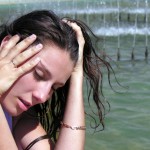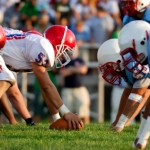We've been away for a short vacation with our eleven-year-old grandson at Harry Potter Wizarding World in Orlando. It was hot and humid much of the time, although the frequent rain storms helped cool things off. One of the reasons we moved from the San Antonio area to Colorado after retiring from the Air Force was the heat. My comment in the late 1990s was, "Texas has Summer and the other three days."
I grew up in Wisconsin, my wife in Montana, and although we lived in a number of locales during each of our 20+ years as USAF officers, most of them were in warmer climates. We wanted four seasons in our retirement location and we certainly have them now.
Florida brought back memories of my years in Texas; sixteen of my twenty-three active duty years were spent there. So the article in the August 2, 2011 edition of The Wall Street Journal titled "Spotting and Taming Signs of Heatstroke" caught my attention.
I've had very little experience with heatstroke, but considerable dealings with heat exhaustion, a milder manifestation of heat-related illness. A lot of that was with basic military recruits, many of whom moved to their initial Air Force training from cooler places. Most of my own exercise these days during the summer months is in an indoor setting, so I'm at somewhat lesser risk in spite of being seventy.
Heatstroke killed over 3,000 Americans from 1997 to 2007 and the National Weather Service statistics said 138 in 2010 and at least 64 in thus far in 2011 died from heat-related illnesses. In some years heat causes more deaths than hurricanes or floods, the other major weather-linked agents of fatalities.
Hydration, hydration, hydration is a major, but not infallible preventive step with water being ranked as good as sports drinks according to a co-author of the American College of Sports Medicine' guidelines. High-school and college football players, who suffer the majority of heat-related sports deaths, need rest breaks, shade, and water, especially during practice, according to that expert who had his own brush with heatstroke in 1985 during a 10K race. During the games themselves, he says, rest breaks are built in.
Along with athletes (and infants left in a hot car), older adults are at high risk, especially those with underlying diseases treated with medications that can worsen the severity of the reaction to heat.
Treatment of heatstroke is a medical emergency, so early diagnosis is critical. Look for confusion, irrational speech, skin that is red, hot and dry, rapid pulse, throbbing headache, dizziness and nausea; some of those casualties become unconscious. Call 911 and get the victim into the shade.
Beyond that lies controversy with some professional groups recommending cooling the afflicted person as rapidly as possible in a cold or ice-water bath, others such as the American Heart Association suggesting fanning and sponge-bathing the person or misting them with cool water, rather than ice water.
Looking at online news articles, I think we may break records this year for heat-associated illness and deaths.


